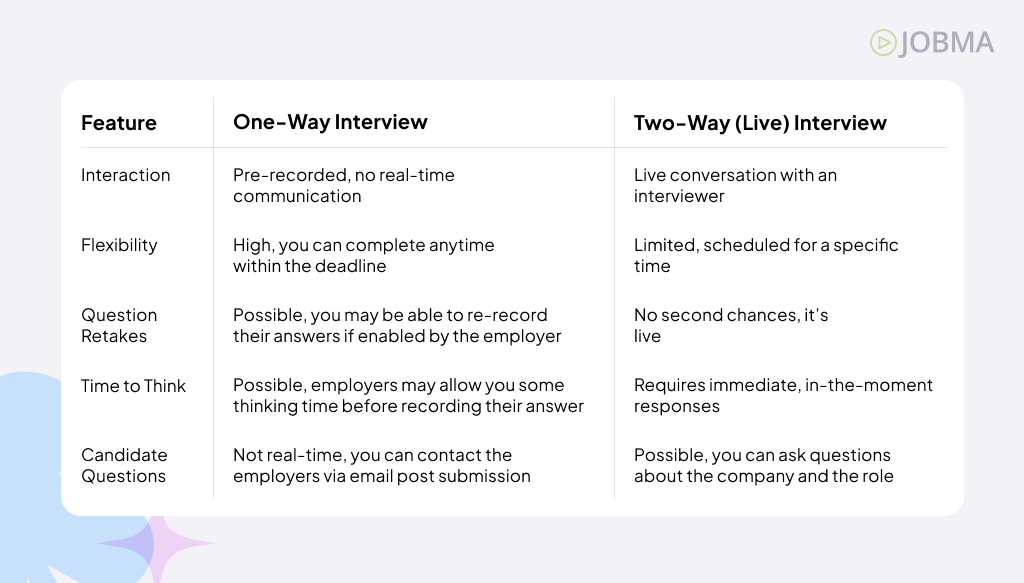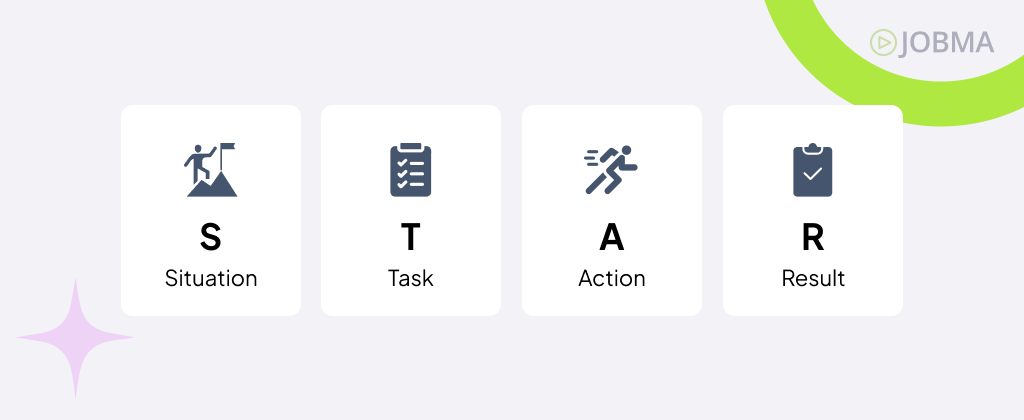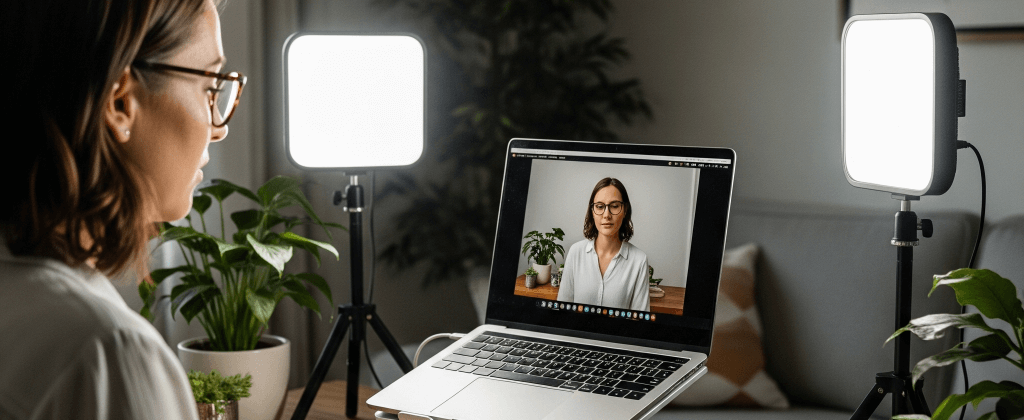Candidate’s Guide to Asynchronous One-Way Video Interviews
As modern HR tools and AI reshape hiring, one-way video interviews have become a core part of the recruitment process. From fast-growing organizations to Fortune 500 companies, hiring teams are adopting AI hiring tools and robust interview management systems to make early-stage screening faster, more objective, and scalable.
This guide is for candidates taking one-way video interviews as part of their job search. Whether you’re applying for roles in tech, healthcare, finance, education, or retail, this guide breaks down exactly what a one-way video interview is, how it works, how to prepare, and how to stand out in a competitive market.
What is a One-Way Video Interview?
A one-way interview, also known as an asynchronous interview or pre-recorded interview, is a virtual interview format where you respond to a set of pre-defined questions without interacting live with an interviewer. Instead of scheduling a time with a recruiter or hiring panel, you complete the interview on your own time, using a platform like Jobma.

Unlike a live or telephonic interview, this format:
- Lets you record responses at your convenience, typically within a set time frame.
- Allows you to be in control of when and where you interview.
- Requires you to record your responses to on-screen questions by speaking directly to a camera.
Imagine this: you’re applying for a role at a company who are using a one-way interviewing platform to screen candidates. After submitting your application, you’re likely to receive an email invite with a link to complete the one-way interview. You’re asked questions, as in any interview, albeit the questions will show up on your screen. These questions may come with a time limit to think and respond, depending on how the interview was set up by your employer.
If you’re new to the concept and wondering, “What is a one-way video interview?”, think of it as the first round of screening without a live interviewer. You answer set questions at your own pace and time, and get to leave a lasting impression without the stress of interacting live with an interviewer.
Why Employers Use One-Way Interviews
If you’re new to the concept of one-way video interviews, it’s natural to feel uncertain. Why would a company ask you to record responses without any live interaction? Does it mean they don’t value your time? Are they just using tech to cut corners?
The answer is no, it’s not about avoiding real conversation, it’s about creating a better process. When done right, a pre-recorded interview benefits both sides: it makes hiring more strategic, thoughtful, consistent, and faster. Understanding why employers use one-way interviews can help you approach the experience with more confidence and clarity.
1. It’s Not a Replacement for Human Interaction, It’s the First Step
Most companies use a one-way interview as an initial screening step. If your response stands out, you’ll likely move forward to:
- A face-to-face, live video, or telephonic interview
- A panel or technical interview, depending on the role
- A final round with leadership or hiring managers
The goal of this interview is to share clear, relevant answers that highlight your skills and suitability for the role. You’re not being judged on dramatic delivery or perfect speech, it’s rather about how well you communicate your thoughts.
The one-way format isn’t about replacing the human touch, says veteran recruiter Nathan Showman, it’s about creating an efficient, fair starting point that allows the best applicants to move forward faster.
2. It Provides Equal Opportunity for All Candidates
In traditional interviews, unconscious bias can creep in based on accents, appearance, small talk, or even how early in the day the interview is held. A one-way interview neutralizes these biases by:
- Asking every applicant the same set of questions, which are pre-defined according to the requirements of the role.
- Allowing recruiters to review and compare responses from different candidates based on their objectivity and communication skills
- Supporting fairer evaluation because both you and the recruiters can process interviews without pressure or chaos, especially in the early screening stage
In a two-way phone interview, one applicant might face a rushed interviewer; another might get a friendlier one. In a one-way format, applicants receive the same tone, time limits, and review process.
3. It Creates a Scalable, Flexible Experience For Everyone
Scheduling interviews is a logistical nightmare for both you and your recruiter. Across time zones, work schedules, and hiring teams, it can take days just to secure a 30-minute slot.
With asynchronous interviews,
- You can record your responses at a time that works for you (often within a 3 to 5-day window).
- Employers can review interviews after hours, on weekends, or at any time that works best for them using ATS systems.
Imagine this: you’re applying for a role while still working full-time. Instead of sneaking away during work hours, you can complete your interview after dinner, in the comfort of your home, at your best energy level. This level of flexibility often leads to better-quality interviews because you feel less rushed and more prepared.
4. It Helps Employers Make Objective Hiring Decisions
Modern recruiting teams rely on structured evaluations and tools to reduce subjectivity. Using interview management systems to take async video interviews enables them to:
- Tag moments in your responses for discussion (e.g., “strong leadership example at 0:40”).
- Assess you for role-specific competencies like communication, adaptability, or culture fit.
- Compare candidates across the same criteria, even if they interviewed days apart.
If a hiring manager sees potential in you for a different team, your recorded interview can be shared internally, giving you extra visibility without extra effort. This means your interview is not just a one-time impression, it becomes a reusable, reviewable piece of your application that hiring teams can reflect on multiple times.
One-Way vs. Two-Way (Live) Interviews
Understanding the difference between one-way and two-way (live) interviews can help you prepare for each format. Here’s how they compare:

Interview Preparation Cues: How to Structure Your Answers
In a one-way video interview, you won’t be able to rely on real-time conversation or body language cues from an interviewer. That makes your response structure and clarity even more important. Most asynchronous interviews are designed to get more information about your experience and assess problem-solving and cultural fit. It helps recruiters understand how you think and communicate.

The STAR Method
The STAR method is a powerful framework that you can use to structure your answers so they’re well-thought-out, complete, and focused. Let’s understand this method:
S: Situation
The Situation sets the stage for your story. It’s the context and background that the recruiter needs to understand before you dive into the details in your response. The key here is to keep it brief but informative, without overwhelming the listener with unnecessary details.
What to Include:
- When and where did the event take place? If it were a project at work, an extracurricular activity, or a volunteering experience.
- Who was involved? Were you working with a team, a customer, or independently?
- What was the problem or challenge? This is what makes this situation significant.
Example: In my previous role as a customer support rep at an e-commerce company during the 2022 holiday season, we saw a 40% spike in customer inquiries.
T: Task
Once you’ve set the stage, explain your role and responsibility. Get into the challenge that you were expected to tackle and explain your objectives or goals in that situation. Here, you’re focusing on your accountability and the role you played.
What to Include:
- What were you specifically tasked with? Specify the specific goal, deliverable, or deadline you had to meet.
- What challenge were you expected to overcome? Whether it is a time or resource limitation, or a problem with customer satisfaction.
- How did this tie into the larger team or company objectives? Explain how your task aligned with organizational goals.
Example: I was responsible for resolving customer escalations while ensuring the response cycle reduced over time.
A: Action
The Action step is where you get to showcase your problem-solving skills, strategic thinking, and ownership of the situation. Here, you explain the exact steps you took to address the challenge. This is your chance to demonstrate how you approached the task, how you worked with others, and the skills you applied.
What to Include:
- What specific steps did you take? Walk the recruiter through the actions you took in detail.
- What tools or methods did you use? If you used specific software, methodologies, or techniques to organize your efforts and maximize productivity.
- Did you collaborate with others? If you did, highlight your effective communication and delegation skills.
Example: I developed a prioritization process for urgent tickets, collaborated with our fulfillment team to resolve issues faster, and drafted template responses to common inquiries.
R: Result
Finally, share the outcome of your actions. The Result is where you demonstrate the impact you had. This could include metrics, quantitative achievements, or even qualitative improvements (e.g., customer satisfaction or team morale). Make sure to connect your efforts to the overall success of the situation.
What to Include:
- What did your actions lead to? Mention if the goal was achieved and what changed because of your efforts and approach.
- Was there a measurable impact? Provide quantifiable results (e.g., “I increased sales by 25%” or “customer satisfaction improved by 15%”).
- If metrics aren’t available, talk about the positive changes your actions brought about (e.g., “Improved team collaboration” or “Reduced stress levels within the team”).
Example: As a result, we reduced ticket resolution time by 25% and customer satisfaction scores improved from 4.2 to 4.6 during the busiest month of the year.

Common One-Way Interview Questions and How to Answer Them
Below are five common questions asked in a pre-recorded interview, with guidance on how to use the STAR method to answer each.
1. Tell me about a time you had to resolve a conflict at work.
This question helps employers evaluate your interpersonal skills, empathy, and ability to navigate challenging dynamics. To respond to this question, avoid dramatizing the conflict. Focus on how you handled it professionally, not just what went wrong.
Sample Answer: “While working as a project coordinator, two team members disagreed on the scope of a deliverable. As team lead, I needed to keep the project moving forward without alienating either contributor. I scheduled a short meeting with both parties, asked clarifying questions, and had each person outline their concerns. I facilitated a compromise that clearly defined roles and deliverables moving forward. Not only did the project stay on track, but the team ended up delivering early. Feedback from both team members improved in our post-project survey.”
2. Why are you interested in this position?
Recruiters want to know if you’ve done your research and if your goals align with the company’s direction. To respond to this question, connect your career goals with the company’s mission or the role’s responsibilities. Highlight a specific aspect of the job description that excites you.
Sample Answer: “I’m excited about this role at your organization because it combines client-facing responsibilities with strategic thinking, which aligns perfectly with my experience in account management. I’ve followed your sustainability initiatives and appreciate your commitment to ethical practices. It’s motivating to be part of a team that values purpose alongside performance.”
3. What would your previous manager say about your work ethic?
Recruiters are probing for soft skills, dependability, initiative, and self-motivation. To respond to this, reinforce your self-awareness and use actual feedback or performance review phrases.
Sample Answer: “During my time at a healthcare SaaS company, we underwent a rapid implementation cycle for multiple clients with the help of subscription billing software in order to manage user accounts from free trial stage through onboarding to paid memberships. As the implementation analyst, I needed to juggle five simultaneous go-lives while supporting new hires. I proactively built internal playbooks to help onboard new team members, while also offering weekend support for one critical account launch. My manager praised my ownership in our quarterly review, and I was promoted to Implementation Lead six months ahead of schedule.”
4. How do you manage multiple priorities under pressure?
In an agile work environment, recruiters want employees who stay calm and maintain their productivity. TO respond to this, highlight your ability to prioritize, communicate clearly, and adapt quickly. By demonstrating how you have met challenging project milestone examples, you show your ability to stay focused under pressure.
Sample Answer: “As an operations associate at a logistics company, I was managing daily shipping workflows and inventory tracking. One week, two major deliveries were delayed, and a system outage impacted real-time updates. I created a manual backup tracking spreadsheet, rerouted deliveries based on client priority, and communicated updates to stakeholders in real-time. No orders were missed. Two customers highlighted our responsiveness in their feedback.”
In a one-way interview, your words are your presence. A structured, thoughtful response not only shows that you’re qualified, but it also shows you care enough to prepare.
Best Practices for One-Way Interview Success
A successful one-way video interview is about much more than simply knowing how to answer questions. While content is key, the delivery, technical setup, and presentation all play pivotal roles in helping you stand out.

Here are some key recommendations to ensure you ace your pre-recorded interview.
Environment Setup
Your environment is the first impression employers get, even before you say a word. A professional, distraction-free setting reflects well on you and portrays your professionalism. One-way interviews are typically conducted through a secure video platform, so your recordings are safely handled while you focus on presenting yourself effectively. Here’s how to set yourself up for success:
1. Choose a Quiet, Controlled Location: A quiet room with minimal background noise is essential. Avoid high-traffic areas like living rooms, kitchens, hallways, or public coffee shops. If possible, close windows, doors, and turn off any appliances that might buzz or hum. This ensures that your voice comes through clearly and without distractions.
2. Neutral, Uncluttered Background: Ideally, sit in front of a plain wall or an uncluttered space with your diploma frame hanging on the wall. Avoid places with personal items or distractions, like busy shelves or posters. If a blank wall feels too stark, you can also use a professional-looking virtual background.
3. Lighting: Good natural lighting makes all the difference, but if you’re in a room with poor lighting, invest in a soft ring light or a warm-toned desk lamp. Position the light in front of you, never behind you. Facing a window or soft light will illuminate your face, helping the interviewer see you clearly.
Presentation and Communication Tips
While the environment sets the stage, your presentation and delivery will define whether you leave a lasting impression. Employers are looking at how well you present yourself, even if they can’t interact with you in real time.
1. Dress as You Would for an In-Office Interview: Even though you’re recording remotely, dress in business casual or professional attire based on the role. Avoid overly bright colors or busy patterns, which can be distracting on camera. Stick to solid, muted colors like navy, black, gray, or white for a professional and clean look.
2. Look Directly into the Camera, Not at Your Screen: This may feel odd at first, but looking at the camera creates the illusion of eye contact. It makes you seem more engaged and trustworthy, especially in a one-way interview where the recruiter will be watching your video. Practice this beforehand by recording a short video. Watch it to see if you tend to glance at your image, and adjust your glance accordingly.
3. Speak Clearly, with Controlled Pace: Speak at a moderate pace, not too fast, but also not dragging your words. Recruiters may not have the chance to rewind or replay sections of your interview. Avoid using too many filler words like “um,” “like,” or “you know.” Pausing between sentences is fine, and it makes you sound more thoughtful.
Technical Readiness
Technical glitches can derail even the best responses. To avoid disruptions and ensure you look and sound your best, complete the quick technical check within the interviewing platform before recording.
1. Test Your Microphone and Webcam: Test both your microphone and webcam before the interview to ensure they’re working well. Pre-recorded video interviewing platforms like Jobma also have technical checks built in for a smooth interview flow.
2. Check for Updates or Compatibility Issues: Make sure your platform is up-to-date, and ensure your device is compatible with the platform’s system requirements. Try logging in early to avoid last-minute technical issues. If you’re using a new platform, take a few minutes to familiarize yourself with the interface.
3. Close All Background Apps and Notifications: Mute notifications on your phone and computer to avoid distractions. Close any unnecessary apps or browser tabs, as they can slow down your device and interfere with your microphone or camera.
4. Use a Wired Connection or Stable Wi-Fi: Connect to a wired internet connection for a stable and fast connection. If you’re using Wi-Fi, make sure you’re close to the router. Avoid using public Wi-Fi networks (like coffee shops) as they may not be secure or fast enough for smooth video streaming. As a vital backup plan, especially if you travel often or your home Wi-Fi is unreliable, having a dedicated mobile hotspot is non-negotiable. Setting up an eSIM on your phone can provide the high-speed, secure connection necessary for smooth video uploads, ensuring technical failure doesn’t sabotage your perfect answer.
Ace Your One-Way Interview With Confidence
Navigating a one-way interview for the first time can feel like stepping into uncharted territory. There’s no live recruiter to nod reassuringly, and no back-and-forth to build momentum. But with the right mindset, prep, and understanding of the process, this format can work in your favor, giving you more control, more flexibility, and more chances to shine on your terms.
What sets you apart isn’t just flawless answers, it’s preparation and commitment. From understanding what a one-way video interview is to anticipating common one-way interview questions and being confident with your tech setup, each step you take helps you perform better.
The shift to asynchronous interviews and pre-recorded interviews is not just a tech trend, it’s here to stay. Your ability to adapt and show up well-prepared can be a career-defining skill.




